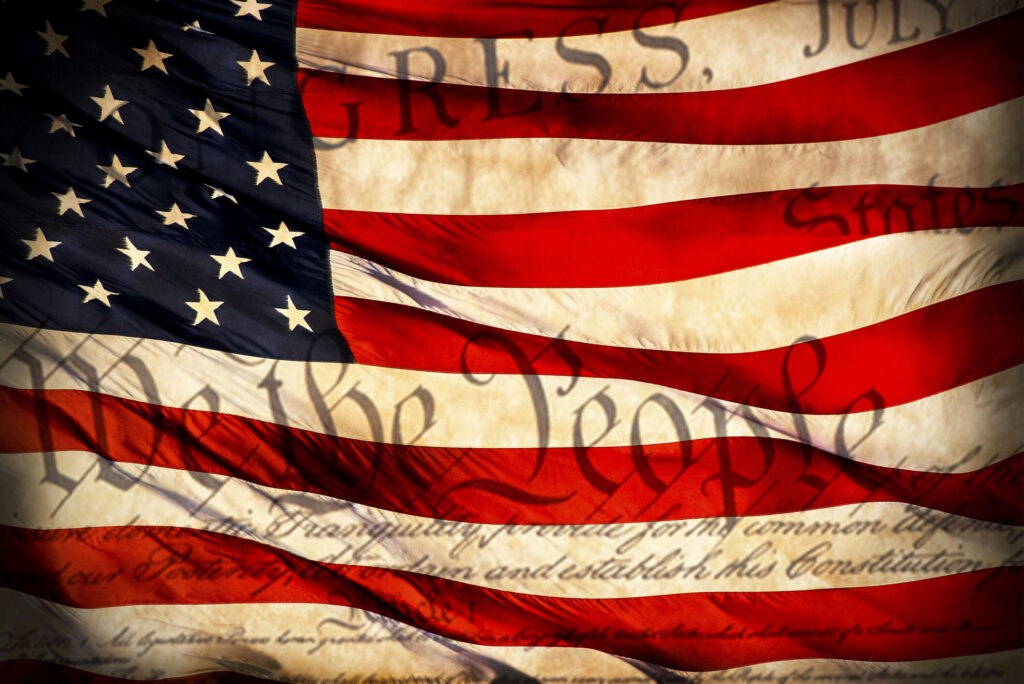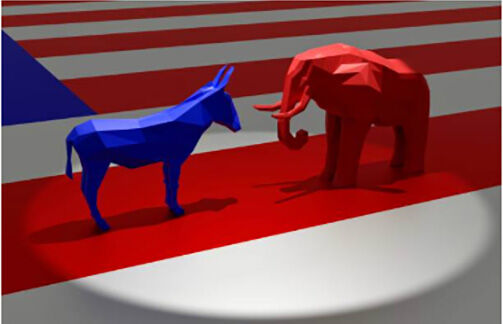Islamophobia, the KKK, AI robots, replacement theory and the fear of others | CRONIN
What do Donald Trump, Barack Obama, Bibi Netanyahu and New York City’s recent political shooting-star Zohran Mamdani all have in common? According to the Human Genome Project, they share 99.9% of their genetic DNA sequences, and they can trace their ancestry back to relatively recent common ancestors.
Yet Mamdani is getting the Obama “birther” treatment — smearing attacks that helped launch President Trump’s political career several years ago. Mamdani is a Muslim of Indian heritage, born in Uganda and is currently an elected state legislator in New York. He is also a self-proclaimed Democratic Socialist who stunned New Yorkers by defeating former Gov. Andrew Cuomo and others in the city’s Democratic primary for mayor. The main election will be on Nov. 4.
Mamdani apparently won because he is a savvy social media millennial who knows how to use TikTok and attract huge numbers of Instagram followers, and he concentrated on affordable housing, which is the top hot-button issue for young and working-class New Yorkers. He also was running against candidates who (politely speaking) had “baggage.”
Politicians in both parties and leading business officials, especially in the New York real estate industry, are freaking out. Trump supporters are saying Mamdani should be deported. Trump has called him a “lunatic communist” and says he will arrest Mamdani if he gets elected and defies U.S. immigration policies.
London has had a popular Muslim mayor for several years. But what people are concerned about in New York is whether a pro-Palestinian, anti-ICE liberal populist can win and be effective in capitalist and heavily Jewish New York City.
Fear of people who are different is part of the human condition. Mamdani’s success should encourage rigorous debate about his proposals and political views. Some of this is occurring. But he is also subject to mean-spirited religious and cultural slurs and horrible tropes, such as “the only good Muslim is a dead Muslim.”
Stay up to speed: Sign up for daily opinion in your inbox Monday-Friday
The world is full of tribal animosities: Hindu versus Muslims in India; Shia versus Sunni in the Middle East; Protestant versus Catholic in Ireland; Ku Klux klanners versus blacks and immigrants, etc.
A compelling novel by Korean American Min Jin Lee called “Pachinko“ chillingly depicts Japanese discrimination against and shaming of Korean families. Tens of thousands of talented and hard-working Koreans tried to “make it” in Japan and were routinely treated shamefully.
Pulitzer Prize and National Book Award winner Tim Egan has written one of the most trenchant historical accounts of racial and ethnic hatred in America. In his book “A Fever in the Heartland: The Ku Klux Klan’s Plot to Take Over America and The Woman Who Stopped It” (Viking, 2023), Egan describes the deep-seeded nativist hatred held by white and Protestant supremacists.
Egan’s book is not about the origins of the Klan in the Reconstruction era in the southern U.S., but about the Klan’s “second coming” in the American midwest, that began around 1915 and flourished in the U.S. in the 1920s.
In 1905, Thomas Dixon, Jr. published a best-selling book called “The Clansman: A Historical Romance of the Ku Klux Klan.” As Egan writes, “His Black caricatures were lecherous, slovenly and criminal. His whites were Knights in bed sheets.”
A few years later, in 1915, this book was turned into one of the first blockbuster commercial films called “The Birth of a Nation.” The movie blatantly celebrated the Ku Klux Klan, and dehumanized and demonized Blacks. But it packed theaters and helped recruit new members to join the Klan.
In this “second coming”, The Klan’s new agenda now included exclusionary and discriminatory efforts aimed at Asians on the west coast, Mexicans in the southwest, Mormons in the Rocky Mountain states, Jews on the east coast and immigrants and Catholics everywhere.
Immigration panic was in the air in the U.S., not just in the south, but widespread in the north as well. “America is for Americans” became a popular slogan.
Klan clubs spread throughout the midwest and into Colorado. In 1923, Colorado elected a Klan governor who promised to fire all Jewish and Catholic professors who taught at the University of Colorado. He kept his Klan outfit ready in the governor’s office. Denver elected a mayor who was a member of the Klan. Cross burnings were a frequent sight along the Front Range of the Rockies.
But Egan’s book mainly focuses on Indiana in the 1920s. Indiana became the most prominent example of how the Klan won members and political power. At its peak in Indiana, the Klan may have had 400,000 dues-paying members and scores of Protestant ministers who proselytized for its ideology. There were even Klan clubs in high schools.
In the 1920s, a young man named David C. Stephenson made a lucrative career out of being the Grand Dragon of Indiana’s KKK. He began in Evansville and moved to Indianapolis; a city that became known as “Klanapolis.” Stephenson, or “Steve,” as he was widely known, developed a political and business system that encouraged people to buy from Klan-supporting businesses and vote for Klan-friendly Republicans. He and his cabal bribed church ministers to preach the Klan’s cause.
Egan writes during the 1920s, the KKK in Indiana successfully packaged “the resentment of the age into a political force.” The Ku Klux Klan controlled both the Republican Party and the Indiana state capitol. “Steve” transformed the largely inactive Indiana Horse-Thief Detective Association into an auxiliary political enforcement agency for the Klan and the Republican Party.
Egan discusses the Klan’s efforts to attack and disgrace the Catholic stronghold at the University of Notre Dame. Only after a prolonged street fight did the “Fighting Irish” finally win.
Preaching “white supremacy,” the Klan backed the restrictive “National Origins” immigration laws passed in Washington D.C. in 1924. The Klan also backed sterilization laws designed to prevent mentally or physically “unfit persons” from having children. Thousands were sterilized against their will under this law.
One extremist Klan speaker just outside of Fort Wayne bluntly put the Klan’s philosophy this way: “I want all the Catholics, Jews and Negroes on a raft in the middle of the ocean, and then sink the raft.” This line received wild applause from the audience. This was about the same time that nativist groups in Oklahoma instigated the tragic Tulsa Massacre, and that ranchman William Hale murdered Osage Indians to obtain the oil rights on their land. These Osage murders are depicted in the riveting 2023 film “Killers of the Flower Moon.”
Indiana’s Grand Dragon Stephenson became so powerful he boasted “I am the law.” He operated as a shadowy godfather, or Al Capone, of Indiana politics. He was also a heavy drinker and a womanizer (and eventually a convicted rapist and murderer,) and this ended his career and presidential aspirations.
But the larger takeaway from Egan’s book is that Americans, apparently like people everywhere, have an almost allergic reaction or irrational fear of people who are noticeably different from themselves.
Fear about “undesirables” has fueled nativist resentments, not only in Indiana but nearly everywhere. Egan speculates a vein of hatred was probably always there ready to be tapped. He adds:
“It’s there still and explains much of the madness threatening American life a hundred years after Stephenson made a mockery of the moral principles of the Heartland (in the 1920s). The Grand Dragon was a symptom, not a cause, of an age that has been mischaracterized as one of Gatsby frivolity and the mayhem of modernism.”
The second wave of the Klan achieved many of its goals: disenfranchisement of most African Americans, residential segregation, Prohibition, a restrictive national immigration law, the defeat of Catholic Al Smith’s presidential candidacy, and in many places the passage of sterilization laws.
For many people today, the fear of alien immigrants is still an issue that resonates. People worry about being “replaced” by unwanted newcomers or scary new technologies. In 2024, Trump successfully campaigned by warning voters illegal immigrants were taking their jobs and even eating their cats and dogs. That line got our attention — and votes.
Thirty-six percent of Americans have told pollsters they believe in UFOs and the possibility of aliens from other planets coming to the Earth. Most think we should be more worried about this. Classic films such as “Invasion of the Body Snatchers” (1956) and “The Day the Earth Stood Still” (1951) helped raise these fears. Gifted novelist Christopher Buckley satirized these fears in his novel “Little Green Men” (1999).
Today, the fear of “others” — of immigrants and “undesirables” — has fueled nativist populism in the U.S and around the world.
America has probably been more inclusive and “E pluribus Unum ” than elsewhere.
Ours is a multi-ethnic, multi-racial and multi-religious nation. Our goal is to live with one another, respect one another, argue with one another, and then try to achieve our mutual aspirations.
Noted documentary filmmaker Ken Burns recently observed, “Othering is the simplistic binary way to make and identify enemies, and it’s the surest way to ensure your own self-imprisonment.”
Tom Cronin writes regularly on state and national politics. He is the author of “Fireside Chats of a Retired College President” (Booklocker, 2025).
Colorado Politics Must-Reads:











